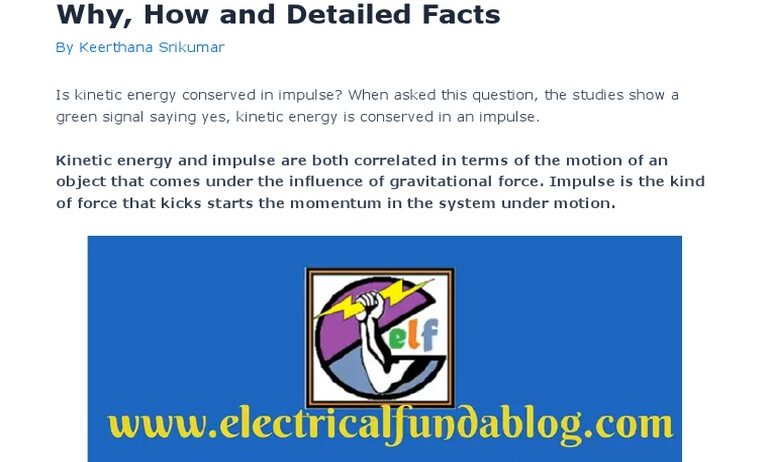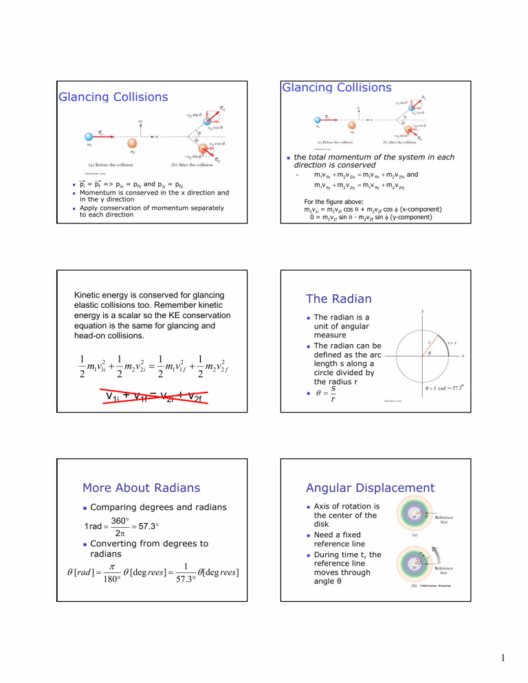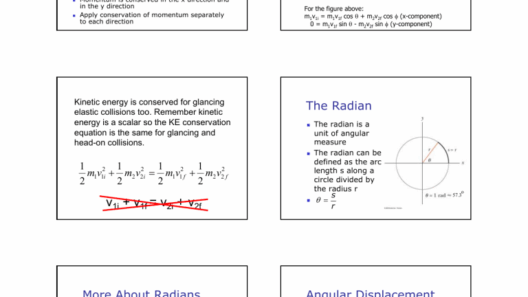In the intricate dance of the universe, every collision—whether it occurs in the microcosm of atoms or the macrocosm of celestial bodies—serves as a profound reminder of the laws of physics that govern our existence. Among these laws, the conservation of energy stands paramount, guiding motion and transformation. But what of kinetic energy, that vibrant force derived from motion? Is it conserved in the enigmatic realm of magnetic collisions? Let’s untangle this concept, knitting together an understanding of energy conservation with the fascinating behavior of magnets.
To commence our exploration, we delve into the very essence of kinetic energy. By definition, kinetic energy is the energy possessed by an object due to its motion, a quantity that scales with the mass of the object and the square of its velocity. Mathematically expressed as K.E. = 1/2 mv², where m represents mass and v velocity, this equation reveals that even a minor increase in speed can dramatically amplify kinetic energy. However, the question emerges: how does this interplay operate in the realm of magnetic collisions?
Magnetic collisions can be perceived as a metaphorical ballet, where invisible forces guide every movement. When two magnets collide, they do so not only with physical presence but with a web of magnetic fields influencing their trajectories, akin to dancers responding to the rhythm of music. The allure lies in how these interactions unfold, particularly regarding kinetic energy.
At its core, the conservation of kinetic energy hinges on the nature of the collision: elastic or inelastic. In an elastic collision, which mirrors the pristine reflection of a perfectly polished surface, both momentum and kinetic energy conserve their integrity. Think of a perfectly balanced equation where the total kinetic energy before the collision equals that after. During magnetic interactions, however, the nature of the collision becomes a focal point. Magnets possess not only mass but also magnetic moments, which significantly influence outcomes during collisions.
Consider two magnets approaching each other. If they attract, kinetic energy transitions seamlessly into potential energy as they draw near, much like a diver poised to leap from a high platform. Upon contact, if the collision is elastic, both magnets will bounce back, retaining their kinetic energy. They oscillate in a display of conservation, a visual testament to energy’s steadfast nature. Yet, if the collision is inelastic—imagine the diver diving not into the pool, but into a solid surface—the kinetic energy transforms, dissipating into other forms such as heat or sound, thereby violating kinetic energy conservation in this context.
The implications of these interactions extend beyond the mechanical realm. Magnetic collisions can, in specific conditions, lead to transformations experienced at the atomic level, thereby altering material properties. The very fabric of materials can shift as kinetic energy disperses, impelling scientists to scrutinize new avenues for energy conservation and transfer mechanisms.
In magnetic collisions, the arrangement and orientation of the magnets play a critical role in determining outcomes. Each magnet can be seen as a unique character in this theatrical performance, with its moment of inertia, mass distribution, and magnetic orientation influencing the course of interaction. They do not merely collide; they communicate, sharing energy that can rejuvenate kinetic flows or dissipate into the ether.
The observational realm presents fascinating possibilities regarding magnetic energy conversion. Contemporary research explores how magnets can be employed in energy-efficient devices, such as magnetic levitation systems. Here, kinetic energy can be harnessed and transformed into potential energy without losing the essence of conservation. It’s a perfect union, wherein magnetic fields assist in sustaining motion while minimizing energy loss—a prime example of nature’s elegance.
Moreover, the quantum mechanics landscape adds a layer of complexity to this intriguing discussion. In quantum magnetic phenomena, such as spin interactions, energy conservation takes on a unique form. The movements of electrons in magnetic fields challenge conventional notions of kinetic energy, pushing the boundary of our understanding to new, uncharted territories.
Despite being grounded in classical physics, these phenomena beg the question: Do we fully grasp the kinetic energy’s behavior in the quantum realm? As scientists continue to probe deeper, they unravel mysteries that showcase how intricate and profound energy interactions can be, modifying our traditional perceptions.
Ultimately, the question about kinetic energy conservation in magnetic collisions is not singular but multifaceted. It encompasses a range of conditions—from elastic to inelastic interactions and their broader implications across scientific domains. Each collision tells a story of energy ideals, where movement, attraction, and repulsion paint a vivid tableau of physical principles at work.
In reflecting on magnetic collisions, it becomes evident that the conservation of kinetic energy dances through myriad layers, echoing the universal truth: energy cannot be created or destroyed but manifests in various forms. Whether it’s a direct exchange in an elastic collision or a transformative journey through an inelastic interaction, kinetic energy remains an unrelenting player in the grand theater of the cosmos.
As we endeavor towards innovative solutions in energy conservation, lessons gleaned from these magnetic interactions can inform strategies for harnessing movement and energy effectively. In the end, the magnetic ballet of kinetic energy serves as a reminder of the interconnectedness of laws governing energy in all its delightful complexity. After all, the universe is not merely a backdrop for our existence; it is a dynamic participant, constantly orchestrating its own symphony of energy conservation.








